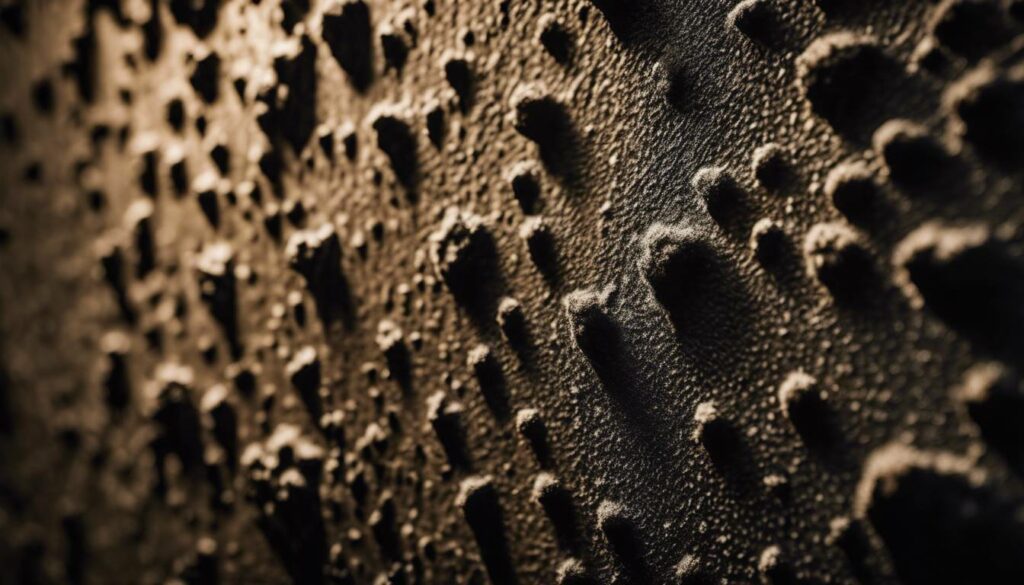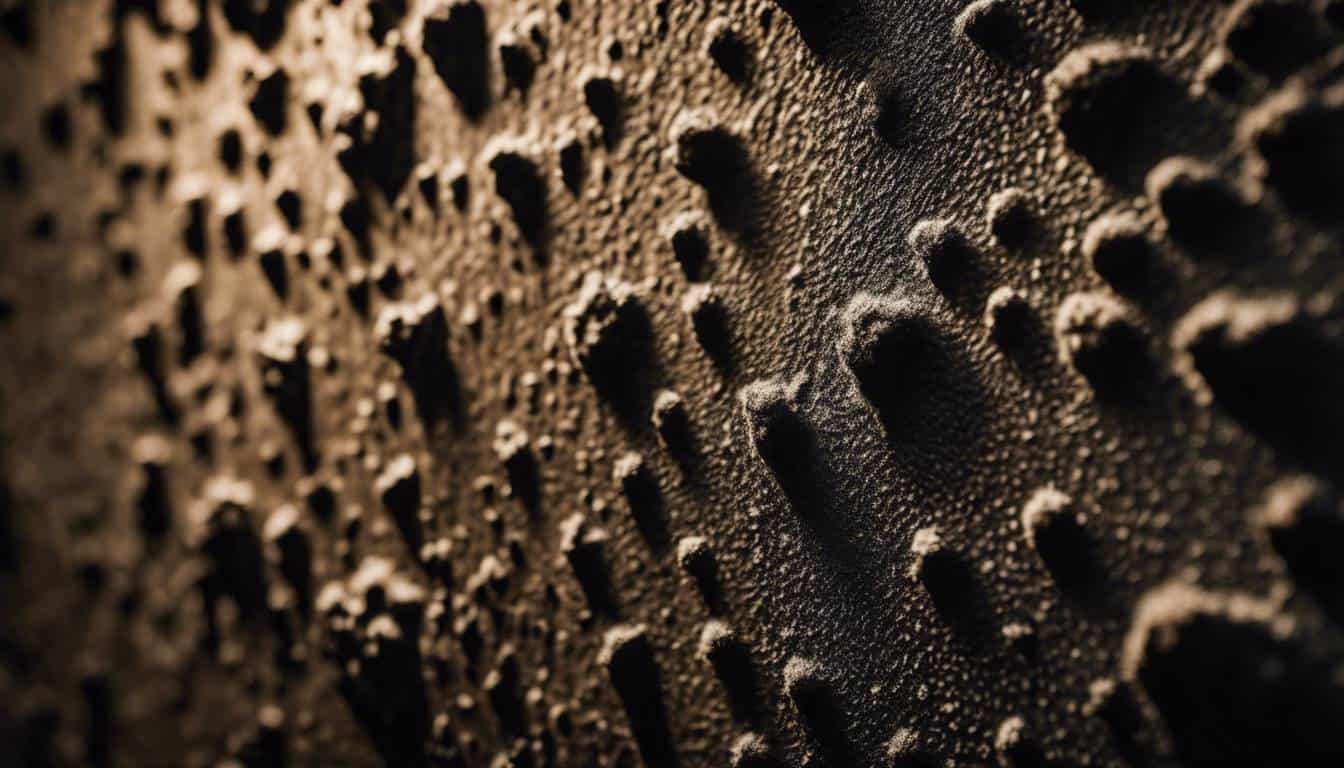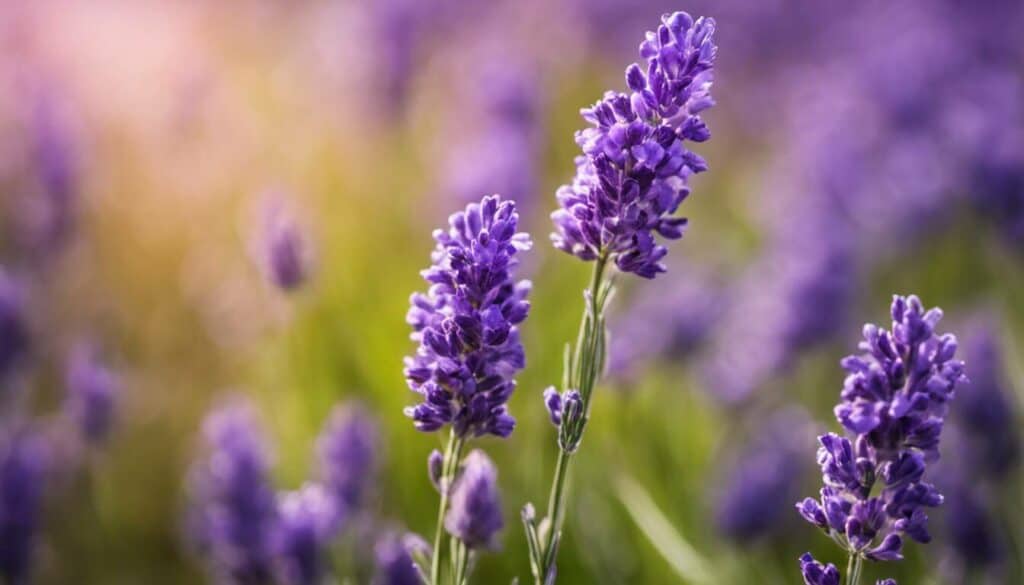I’ve been dealing with mold related illness for 10 years now! Here’s what I learned: mold is actually a sneaky fungus that bursts into life thriving on damp surfaces. It doesn’t just sit there quietly; it produces lightweight spores that carry easily through the air. These can do more than spoil your wallpaper or give off an unpleasant scent. They can pose significant health risks, especially to those with allergies or respiratory problems. And just when you think it’s nothing but some dirt, it turns out mold comes in different forms and colors, sometimes easily mistaken for harmless soot. So next time you notice that odd patch on your wall, remember, there’s more to it than meets the eye.
Mold can pose significant health risks, particularly for those with allergies, immune suppression, or underlying respiratory conditions. Exposure to mold spores can lead to symptoms such as stuffy nose, wheezing, coughing, and skin irritation. It’s crucial to address any mold growth promptly to mitigate these potential health effects.
There Are Many TYPES of Mold
Mold – it’s one of those things that you’ve probably heard about but might not be entirely sure what it is. It’s a type of fungus, like tiny unseen plants, and these little things can be quite a hassle to control once they decide to grow anywhere in your home. Their operation is surprisingly interesting. They create lightweight spores – kind of like seeds – that float through the air and land in different spots. When they find a damp place, with lots of moisture or water vapor in the air, they start to grow and spread.
Let’s dive deep into why they are harmful and what causes them to grow.
Mold loves moisture more than anything else, which is why it often appears in places that get wet often or don’t have enough ventilation. When these spores land on a surface and find the right conditions to grow (think warm, humid indoor environments), they make a cozy home for themselves. Understanding how to stop mold growth is crucial for maintaining a healthy home environment. From there, it begins to spread rapidly. You wouldn’t even realize it until you notice discoloration and musty odors.
Types and Colors of Mold
It’s easy to mistake mold for dirt or soot, especially in poorly lit or hidden areas. Mold comes in various forms and colors – green, black, or white being some of the more common ones found in homes. Some types of mold can be particularly dangerous, so it’s important to be able to identify them correctly.
For example, if you’ve ever seen old bread growing a fuzzy coat after a while, that’s mold too! The white stuff you see is actually thousands of tiny little spores growing together. And when food gets moldy, we know we shouldn’t eat it – imagine what it does when it’s not our food but something as important as our walls!
Basically, mold is like an intruder that makes itself at home wherever there’s moisture and stays until we force it out⎯and without getting rid of its little seeds first, no plans of eviction are successful.
Now we understand that mold isn’t just some gross patch of something growing where it shouldn’t be; it’s a living thing that can affect our homes and our health if left unattended. Understanding these basics will help us tackle the issue effectively.
Identifying Areas Prone to Mold
Mold can be a persistent home invader, seeking out any place with copious amounts of moisture and relative darkness to set up shop. To effectively root it out, you need to be aware of the prime suspects. Here are some areas that are often overlooked but may hide mold:
Common Mold Breeding Grounds
Let’s start with the classic hideouts for mold. Basements, particularly those without proper ventilation, have a propensity for dampness due to poor air circulation, driving mold growth. Crawl spaces trail close behind as they tend to trap moisture underneath the house, creating an ideal environment for mold. And don’t forget about bathrooms – consistently steamy and often under-ventilated, they provide the perfect combination of warmth and moisture that mold adores.
But mold doesn’t stop there. It sneaks into unsuspecting nooks and crannies too. Places affected by water leaks or flooding pose a high risk of harboring mold as the excessive moisture provides an excellent breeding ground.
It’s important to remember that areas around windows, pipes, and air conditioning units are also prone to mold infestations.
Materials Susceptible to Mold
Not only does mold seek out certain areas, but it also has a soft spot for specific materials. Ceiling tiles, especially in environments with elevated humidity levels, are susceptible to mold growth due to their ability to hold onto moisture. Similarly, wallpaper can become a haven for mold if located in a damp or poorly ventilated space. And think twice before using carpet or upholstery in such areas; these materials readily retain moisture, making them desirable spots for mold infestations.
For instance, imagine a basement with outdated carpeting, exposed to periodic flooding because of a crack in the foundation. This scenario sets the stage for an entrancing display of mold thriving beneath your feet, unbeknownst to you.
Armed with this knowledge, you can now proactively inspect these areas and materials regularly to catch and combat any potential mold issues before they become unwelcome housemates. Keep an eye on these target zones, and you’ll significantly reduce the chances of finding more than you bargained for during your next home inspection—guaranteed peace of mind.
With the understanding of where molds thrive established firmly in mind, it’s time to delve into the health risks associated with mold exposure. This critical knowledge could very well be the key to protecting yourself and your loved ones from potential health hazards.
Health Risks Linked to Mold
Mold exposure can significantly impact our health. It’s not just about an unpleasant smell or unsightly stains; mold can cause serious health issues. The effects of mold on our bodies can range from mild discomfort to severe respiratory problems, especially for those with allergies or respiratory conditions.
Health Effects
Mold exposure has been linked to a variety of health issues, including:
- Nasal stuffiness: A common symptom experienced when exposed to mold.
- Throat irritation: Feeling like there’s a lump in your throat or experiencing a dry, itchy feeling.
- Coughing and wheezing: Persistent coughing and difficulty breathing, particularly for those with asthma.
- Eye irritation: Red, itchy, and watery eyes due to mold exposure.
- Skin irritation: Some individuals might experience skin rashes or irritation after exposure to mold.
Prolonged exposure to mold can worsen existing respiratory conditions such as asthma and increase the risk of respiratory infections. For people with allergies, mold exposure can trigger allergic reactions ranging from mild discomfort to severe symptoms.
In more severe cases, individuals may suffer from chronic sinusitis, lung infections, or even develop toxic mold syndrome if exposed to mycotoxins produced by certain molds. This can lead to a wide range of symptoms such as fatigue, headaches, and cognitive difficulties.
Consider Sarah, who has asthma. She lives in a house with a hidden mold problem in the basement. She notices that her symptoms worsen at home but improve when she’s away. This indicates that the mold in her home is exacerbating her asthma symptoms.
This isn’t something that should be brushed off lightly. The potential health consequences of mold exposure are serious and can be detrimental if left unaddressed. It’s essential to promptly address any potential mold issues in your living spaces to safeguard your health and well-being. Taking proactive measures to prevent and eliminate mold growth is crucial for maintaining a healthy indoor environment.
As we navigate through the intricate web of protecting our living spaces from the dangers of mold, we now turn our attention to effective techniques tailored for preventing the growth of this silent menace.
Techniques to Prevent Mold Growth
Controlling indoor humidity levels is a key strategy in preventing mold from taking hold in your home. Mold thrives in damp, humid conditions, making it crucial to maintain indoor humidity levels between 30-50%. You can achieve this by using dehumidifiers or air conditioners to discourage mold growth. Proper ventilation is also essential, especially in areas prone to moisture, such as bathrooms and kitchens.
Moisture accumulation in these areas creates a perfect environment for mold to flourish. Imagine a beautiful garden that you love to water, but if the ground becomes boggy and swampy from excessive water, the beautiful flowers wilt and mold starts to grow. Similarly, without proper ventilation and humidity control, mold can creep into your home before you know it.
Think about the last time you took a hot shower. When you stepped out of the bathroom, didn’t it feel steamy? That’s excess moisture lingering in the air. A simple way to manage this moisture is by using exhaust fans or opening windows after hot showers or cooking.
Promptly Address Water Damage
In addition to managing indoor humidity levels, it’s important to promptly address any water damage in your home. This includes repairing leaks in plumbing, roofs, windows, or walls to prevent moisture accumulation. Regular inspections of these areas for signs of dampness or mold growth are essential for catching potential issues early on.
Imagine your home as a ship sailing through stormy seas. When there’s a leak in the hull, you wouldn’t wait until the ship was halfway submerged before fixing it, would you? In the same way, addressing water damage promptly helps prevent extensive damage and costly repairs down the road.
If you notice a dripping faucet or a stain on your ceiling, don’t ignore it. These could be signs of a water leak that might lead to mold growth if left untreated.
Utilize Mold-Resistant Materials
Furthermore, utilizing mold-resistant materials where feasible can significantly mitigate the potential for mold growth in your home. Opt for products such as mold-resistant drywall, paint, and insulation. These specially designed materials are formulated to discourage mold growth, providing an additional layer of defense against this persistent intruder.
It’s like having an extra set of guards patrolling the perimeter of your home. Mold-resistant materials act as barriers, making it more difficult for mold to take hold and thrive.
When renovating or building new areas in your home, consider using mold-resistant drywall and paints with anti-microbial properties. These materials have been specifically designed to resist mold growth, offering an added layer of protection for your home.
By controlling indoor humidity levels, promptly addressing water damage, and utilizing mold-resistant materials, you can create an environment that is less conducive to mold growth. Incorporating these techniques into your routine maintenance can go a long way in safeguarding your home against the harmful effects of mold. For more comprehensive strategies on getting rid of mold, consider consulting with professionals or researching advanced remediation techniques growth. Incorporating these techniques into your routine maintenance can go a long way in safeguarding your home against the harmful effects of mold.
Moving from preventing mold growth to identifying its presence is crucial for maintaining a healthy living space. Let’s now delve into the telltale signs that indicate the presence of mold in your home.
Finding Signs of Mold in Your Living Space
Mold can be seen, smelled, and sometimes even felt. It’s important to be on the lookout for these indicators as they may signal a potential mold problem. When you’re aware of these signs, you can address them promptly before they escalate into larger issues that are harder and more expensive to tackle. Here are some key areas to focus on:
Visual Indications
When inspecting your living space for mold, keep an eye out for visible mold growth. Mold can appear in various colors including black, green, yellow, or white. The presence of a damp, musty odor in a certain area could also be indicative of mold growth. Remember: Mold is not always visible right away, and sometimes it may hide beneath surfaces like wallpaper or inside wall cavities.
It’s essential to pay close attention to any discoloration or stains you notice on walls, ceilings, or fabrics that seem more significant than typical dirt or aging signs. These visual cues can often provide valuable insight and give you a heads-up when something doesn’t seem quite right.
Moreover, in homes with excess moisture or prior water damage, these visual signs should not be taken lightly. They might indicate an underlying issue that needs immediate attention.
Common Hidden Mold Sites
Hidden spaces within your home can serve as perfect breeding grounds for mold. It’s imperative to check these concealed areas regularly to prevent mold from flourishing undetected. Places such as behind wallpaper, under carpets, inside HVAC systems, and within wall cavities are common spots where mold can thrive without being easily noticed.
For instance, when unchecked moisture seeps behind wallpaper or under carpets, it creates an ideal environment for mold growth due to the presence of darkness and trapped moisture. Similarly, within HVAC systems and wall cavities, poor ventilation and humid conditions often provide the perfect habitat for mold spores to multiply.
By making it a habit to inspect these hidden spots periodically, you’re proactively identifying potential mold issues before they escalate into major problems.
It’s important to remember that discovering these signs doesn’t mean you need to panic—rather, it empowers you with the knowledge needed to address any potential issues early on and maintain a healthy living environment.
Now equipped with the knowledge of recognizing mold signs, let’s move on to exploring effective ways to eliminate and prevent these issues in your living space.
Safe Remedies for Mold Problems
Mold can be a persistent problem, but there are safe ways to address it without resorting to toxic chemicals. Here are some methods for dealing with mold that are safe, effective, and won’t harm your health or the environment.
DIY Cleaning with Natural Remedies
Mold on hard surfaces can usually be removed through thorough cleaning using a mixture of soap and water or a bleach solution. However, if you’re looking for a more natural approach, vinegar diluted with water serves as an excellent remedy for mold removal. Vinegar is affordable, easily accessible, and has powerful antimicrobial properties that make it effective against mold.
You can also use other natural methods like:
- Baking soda
- Tea tree oil
- Grapefruit seed extract
- Hydrogen peroxide
- Sliced orange and vinegar combination
- Citrus seed extract and water mixture
- Baking soda-vinegar-lemon juice mixture
- Toothpaste
These natural methods not only remove mold effectively but also prevent its return. For instance, baking soda naturally kills mold and absorbs moisture, while tea tree oil prevents mold spores from coming back. When used appropriately, these remedies are safe for individuals and have no adverse health effects.
Professional Assistance for Extensive Mold Problems
For extensive or persistent mold problems that seem beyond your control, consider consulting professional cleaning services that specialize in mold remediation. These professionals have the expertise and equipment needed to ensure safe and effective mold removal without causing further damage to your home. They can identify the root cause of the mold problem and provide a comprehensive solution that addresses both the mold itself and its underlying source.
The process of professional assistance typically involves a thorough inspection of the affected areas, followed by containment measures to prevent the spread of mold spores during the cleaning process. It’s an invaluable service for addressing severe mold issues that may pose significant health risks or structural damage if left unchecked.
By using safe and effective remedies such as natural cleaning solutions or seeking professional assistance when needed, you can effectively address mold problems in your living space without compromising your health or the environment.
Don’t let mold compromise your well-being or home environment. By following these solutions, you can safely tackle mold issues without resorting to harmful chemicals. Stay informed and proactive in addressing any potential mold problems to maintain a healthy living space.






